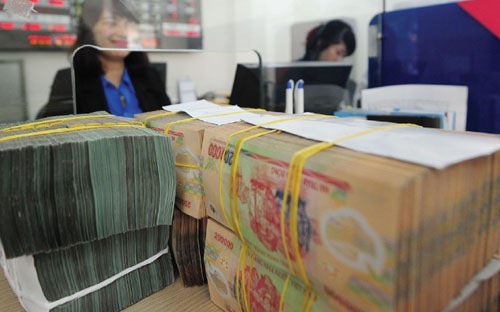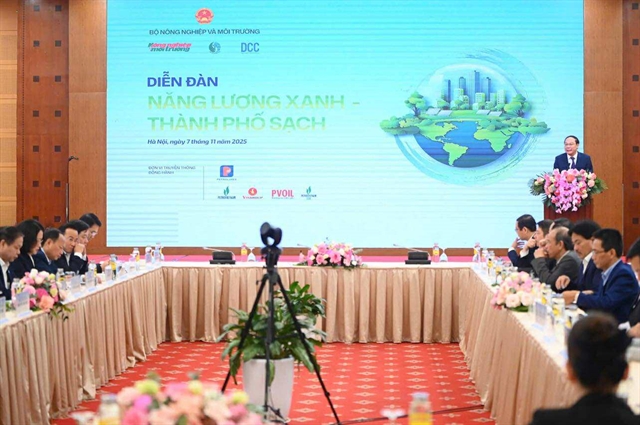 Economy
Economy

Việt Nam News reporter Phương Uyên discusses various facets of the issue with Alwaleed Alatabani, Lead Financial Sector Specialist at the World Bank in Việt Nam.
 |
Việt Nam’s banking system has focused intensely on tackling its non-performing loans (NPLs) over the past few years, following the PM’s five-year (2011-2015) plan to restructure the nation’s credit institutions as well as the recently approved Resolution 42. Despite this, NPL volumes remain high, undermining the safety and efficiency of financial institutions. Việt Nam News reporter Phương Uyên discusses various facets of the issue with Alwaleed Alatabani, Lead Financial Sector Specialist at the World Bank in Việt Nam.
What do you think of Việt Nam’s approach to NPL resolution in recent years? Is it on the right path?
I think there is a renewed focus on the issue of NPL sin Việt Nam at a critical time when we are seeing a lot of new legal instruments being passed by the National Assembly (NA), including Resolution 42. Overall, I think the country is heading in the right direction, as policymakers try to address some of the challenges and risks in the banking system.
Việt Nam is not alone in addressing the issue. Many countries have experienced having a large amount of NPLs in the banking system, which impacts their economic health. Many nations have tackled this problem in a more comprehensive manner, introducing transparency in classifying them, working with asset management companies and increasing the scope of relevant resolutions to make them more effective.
Can you share your thoughts on Resolution 42/2017/QH14 – its intention, potency, and potential effectiveness?
Given the current circumstances, Resolution 42 is directly addressing NPLs in the banking system that pose a major risk to the financial sector. The Resolution is designed to equip the State Bank of Vietnam (SBV) with the legal power to resolve this matter, in an effort to reduce the level of NPLs in this sector to below three per cent by 2020.
Its key points of focus are: modernising the financial sector; consolidating legal regulations and banking supervision; restructuring and resolving substandard banks and assets; and enhancing prudent macro monitoring.
Overall optimism is there, but it all depends on implementation of the resolution itself and the possibility of any rising NPLs in the future. The most important thing is to determine the level of eligibility within the Resolution, through trial and errors and continuous revision.
I believe that problem should be resolved in a sustainable manner, to ensure that the banking sector is fully capable of revitalizing lending to economically viable companies, which is what the Resolution aims at.
In your opinion, what should the Government of Việt Nam do to curb NPLs effectively and sustainably, without becoming too intrusive or bureaucratic?
The major concerns and challenges in managing NPLs stem from global and domestic economic slumps, commodity cycle downturns, delay in project implementation or banks’ recognition of stressed assets, and the inability to exit these.
My recommendation would be that the Vietnamese Government holds banks more responsible for reducing NPLs on a regular basis, through actual learning and practice, study other countries’ experience and listen to expert advice.
For example, India has taken the approach of having its Reserve Bank reinforce the financial system’s ability to cope with stressed assets, and the Government would only interfere via enabling legal frameworks. There should be little direct involvement in managing NPLs, while keeping in mind that the objective is economic value preservation rather than hard recovery of the loans.
In short, the solutions can be pinned down to a few regulatory measures, including early recognition and quick corrective action, optimal structuring of credit facilities, swift exit from unviable accounts and reduction of system-wide concentration risks.
Still, as each country is unique, the SBV should be adapt to the Vietnamese economic situation to see what works best. This is a long term challenge, and nobody should expect the NPLs issues to be resolved overnight. I would suggest that comprehensive strategies are deployed for medium and short term objectives as well.
As a key World Bank official in Việt Nam, is there an institutional view of the NPL management process here?
We are quite positive that the Government is enacting and developing legislation to be presented to the NA, in order to pinpoint and overcome NPL-related issues.
The WB, as a long term partner working in close collaboration with the SBV, is happy to see the country tackling NPLs problems in the banking sector, especially regarding its capital foundation. We will certainly continue providing technical support, expert opinion on other countries’ NPLs experiences, and share research findings. — VNS


.jpg)

